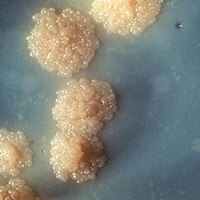Factors associated with culture conversion among adults treated for pulmonary extensively drug-resistant tuberculosis during 2018-2019 in the Russian Federation: an observational cohort study

All claims expressed in this article are solely those of the authors and do not necessarily represent those of their affiliated organizations, or those of the publisher, the editors and the reviewers. Any product that may be evaluated in this article or claim that may be made by its manufacturer is not guaranteed or endorsed by the publisher.
Authors
Treatment outcomes for Multidrug/Rifampicin-Resistant Tuberculosis (MDR/RR-TB) and Extensively Drug-Resistant Tuberculosis (XDR-TB) remain poor across the globe and in the Russian Federation. Treatment of XDR-TB is challenging for programmes and patients often resulting in low success rates and onward transmission of drug-resistant strains. Analysis of factors affecting culture conversion rate among XDR-TB patients may serve as a basis for optimization of treatment regimens. We conducted a retrospective cohort study using health records from 54 patients with pulmonary XDR-TB treated at a tertiary level facility in the Russian Federation. The study population included adult patients with culture-positive pulmonary XDR-TB who started treatment between 1 January 2018-30 June 2019. Culture conversion was defined as two consecutive negative cultures, collected at least 30 days apart. The date of sputum culture conversion was taken from the first of two consecutive negative sputum cultures fulfilling these criteria. We measured time to culture conversion using cumulative incidence functions accounting for competing risks and applied binary cause-specific Cox regressions to assess associated factors. Sputum culture conversion was recorded for 43 (79.6%) patients. Median time to culture conversion adjusted for competing risk of loss to follow up was 4 months [95% confidence interval (CI): 2–5]. The number of patients who had culture converted by treatment months 2, 4, and 6 were 12 (22%), 29 (54%) and 38 (70%) respectively. In unadjusted analysis, positive baseline sputum smear microscopy [hazard ratio (HR): 0.34, 95% CI: 0.18-0.66; p=0.001), hepatitis C (HR: 0.35, 95% CI: 0.14-0.89; p=0.023], and human immunodeficiency virus (HR: 0.30 95%, CI: 0.09-0.97; p=0.045), and receipt of fewer than 4 effective drugs in the treatment regimen (HR: 0.13, 95% CI: 0.03-0.60; p=0.009) were associated with delayed culture conversion. When compared to their combined use, patients receiving regimens with bedaquiline only (HR: 0.12, 95% CI: 0.03-0.49; p=0.003) or linezolid only (HR: 0.21, 95% CI: 0.06-0.69; p=0.010) were less likely to achieve timely culture conversion. Factors delaying sputum culture conversion should be considered in the management of patients with XDR-TB and considered by clinicians for regimen design and treatment strategies. Our study outlines the importance of simultaneous inclusion of bedaquiline and linezolid in treatment regimens for patients with XDR-TB to reduce time to sputum conversion and increase treatment success.






